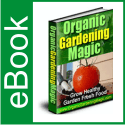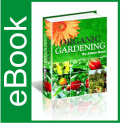Planning a Vegetable Garden with Raised Beds
Planning a Vegetable Garden with Raised Beds
Article by Becky Shelly
Have you decided to grow a vegetable garden for the economy of it, or because youd like to eat organic fruits and vegetables? Whatever the reason, planning a vegetable garden can be very rewarding.
Whether you have hardly any space or lots of space you can have a raised bed garden. You can make a raised garden bed out of pretty much anything that has sides; an old tire, a childs swimming pool, or lumber nailed together. If youd like the aesthetics to be a little more appealing, you can purchase special connectors and buy the lumber, or you can purchase the whole kit. Some of the complete kits use cedar, composite wood, or recycled plastic.
First, in planning a vegetable garden you must determine how many raised beds you will need. Are you growing all the vegetables youll eat or are you going to can them, or share with friends? If you have a small space or not enough time to devote to your garden, you can still have a garden, but start with one small bed.
Second, your vegetables will need eight hours of full sun every day. The plants need lots of sun to grow and produce. A southern exposure is ideal for vegetables. They also need plenty of water, but not so much that they will stagnate and sit in soil that wont drain. You will also need to get water to the plants via hose or drip system. If you dont mind carrying water you could also do that, but unless its a very short distance you will probably tire of that. Another plus with raised beds are; less evaporation which equals less watering. The sides of the bed contribute to preserving water and because the plants are closer together the shade keeps everything cooler so they dont dry out as fast.
Third, you will need good soil. Fill the raised bed with a minimum of six inches of good soil. Remove any weeds underneath where the raised bed will be located and loosen the soil underneath so drainage and roots can continue beyond the raised bed depth.
Planning a vegetable garden would be nothing without the soil. Ideally your soil should contain a mixture of top soil, compost and peat moss or perlite or vermiculite. This combination will provide the plants with loose soil that will drain well and also retain moisture.
Fourth are the types of vegetables for your garden. If your passion is cooking you would probably want to plant herbs, different varieties of onions or peppers, etc. If you like canning you can enjoy your garden all year, and you would probably want to plant cucumbers for pickles, beets, beans, etc. But, dont plant too many in one bed; the plants need room to grow.
Last but not least, enjoy and have fun. Planning a vegetable garden can get you in touch with mother nature and reduce stress; so not only are you eating healthy but living healthier.
About the Author
Becky Shelly is a health practitioner researching natural remedies at Prescription Drug Alternative. She also enjoys organic gardening and you can find more information on growing your vegetable garden with helpful step by step planting guides with a free drag and drop planner at her vegetable garden planning page.

 November 28, 2011
November 28, 2011 







